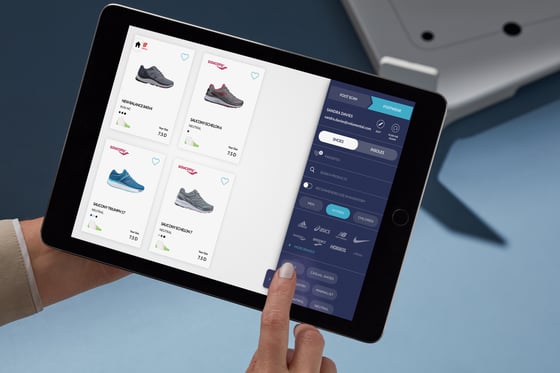We all know that shoe size labels don’t help much in finding the perfectly fitting shoe. Our recent industry study reinforces this size fitting dilemma. The study revealed that a surprising 40 percent of shoe styles do not fit true to the labeled size.
Because of these inconsistencies, some might be led to believe that, in order to provide great shoe fitting recommendations, the internal dimensions of shoes need to be measured so that those shoe measurements can be matched to foot measurements.
That approach makes perfect sense until you realize it doesn't work.
Based on my 20+ years of experience in the field of shoe recommendations, let me explain why it doesn’t work.
My journey in this field began with managing several projects related to finding reliable ways to measure shoes with the objective of improving fit. The first ideas were simple. We used several different approaches to measuring the most important shoe dimensions, including length, width and instep height.
One of the more sophisticated ideas was to use a pneumatic foot that was placed in a shoe. The foot expanded in several dimensions with adjustable pressure, and then the expansion was measured with distance sensors. We soon realized that all the methods for measuring a few points on the shoe didn’t provide valuable information. It’s also very difficult to know what the ideal pressure should be in those specific points and for each specific type of footwear.
Our next idea was to develop an optical system to scan the inside surface of the shoes. An example of this technology was Shoefitr, which was acquired by Amazon in 2015. The problem with this approach is that it captures the inside surface of an empty shoe, but the internal shoe shape changes significantly with a foot in the shoe. But the changes vary on many factors, especially what materials the shoe is made of. Consequently, measuring an empty shoe is not very useful when it comes to predicting how it will fit a person’s foot.
My final attempt at measuring shoes was using an X-ray scanner. I’m one of the two inventors listed on this patent for the Procedure for measurement of inner dimensions of footwear, so I know the pros and cons of this method inside out.
There was another approach of using a CT scanner in a similar way to X-ray scanning. All of these approaches have several major limitations when it comes to predicting footwear fit:
-
It’s impossible to realistically simulate a foot inside the shoe while it’s being measured, therefore internal shoe measurements alone are inaccurate and unreliable.
-
The system measures the inner shape and dimensions of a shoe, but it does not tell us anything about what the optimal foot shape and size is that fits the space in any given pair of shoes.
-
Some systems cost hundreds of thousands of dollars.
-
It is a logistical nightmare to ship all the new shoes back and forth each season to places that have such scanners.

The Solution
Based on all these experiences, we take a very different approach at Volumental. We don’t scan shoes. We believe the most accurate ‘devices’ to measure the fit of shoes are the feet of shoppers who purchased a specific shoe style and size. By analyzing the foot scans of all the shoppers who bought the same shoe, our AI algorithm, or Fit Engine™ learns how each specific shoe actually fits each specific foot shape. For example, if most of the purchasers of a shoe have wide feet, then the shoe obviously fits better to wide feet. If most of the buyers of a shoe go up a size compared to what they should normally buy based on their foot scans, then the shoe obviously runs small. No other measurement device or approach can provide such detailed fit data.
There is no doubt that footwear brands could improve the consistency of shoe sizes. Several actually have utilized Volumental data, as discussed in this article. However, shoe size standardization is still a complicated task. If we think of what defines the fit of a shoe, we would probably agree that shoe lasts are very important and there could be better industry-wide standardization than currently exists.
But there are many other parameters that influence fit. If you were to try a shoe such as a trainer made from a very elastic upper material, it will fit much larger than a shoe made from leather. This is true even when they are produced from the same shoe last. Because of all the parameters that influence the fit of a shoe, there will always be some variation of fit, even between shoe models within one brand.
So the real solution to the sizing issue is to gather reliable information on how each shoe fits and provide the information directly to footwear shoppers and store clerks. Based on all my experience in using different methods to measure the fit of shoes, I’m confident that the method of connecting foot scans with purchase data, as described above, is by far the most accurate and scalable method of acquiring information on how each shoe fits.
Big data has proven to be effective in solving hard problems in many domains, and it can definitely solve the footwear sizing issue. Applying machine learning and AI methods on large datasets of foot scans matched to specific footwear purchases provides a new level of size recommendations to in-store sales associates, e-commerce stores, and footwear shoppers.
